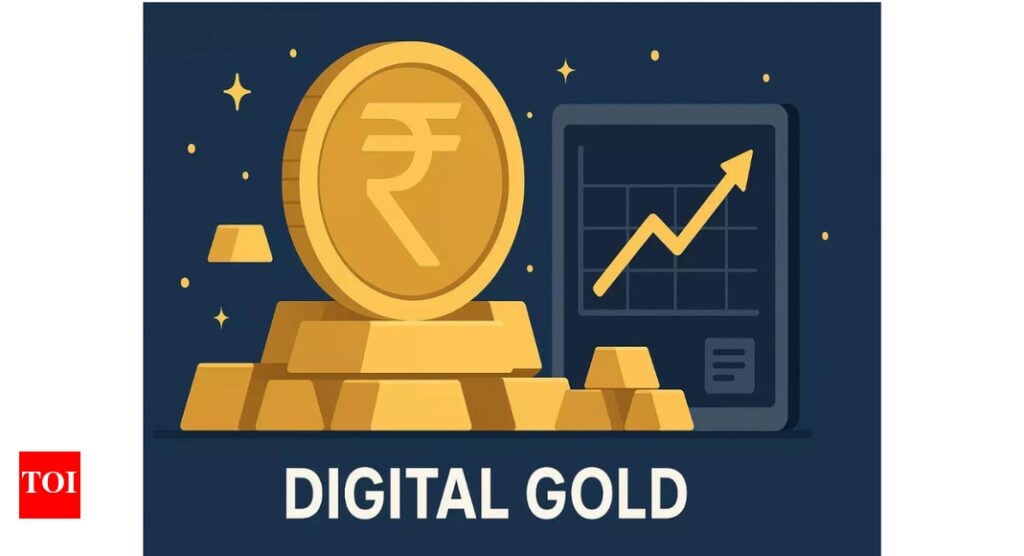Digital gold vs jewellery: Experts weigh in on costs, safety & returns; what you need to know

As Diwali and Dhanteras approach, gold continues to remain a preferred investment and a symbol of tradition in India. While most consumers buy gold in the form of jewellery, coins, and bars during the festive season, digital gold has been attracting attention from investors seeking convenience and systematic wealth accumulation.Digital gold allows investors to benefit from rising gold prices without holding the metal physically. Unlike jewellery, it does not carry making charges and can be purchased online with investments starting as low as Rs 10. The metal is stored in secured vaults, protecting buyers from theft, damage, or the hassles of safe storage, according to an ET report.“Digital gold feels cheaper because you can start small, even with Rs 10. But add platform spreads and GST, and the total cost often comes close to buying physical coins. The real value is convenience. For serious investors, however, Gold ETFs are a smarter alternative as they are regulated by SEBI,” said Trivesh D, COO, Tradejini.Physical gold, on the other hand, retains its charm with lustre and wearability, and its price appreciates over time. Experts, however, point out that it quietly eats into returns due to GST, making charges, and annual locker fees. “Digital gold also has costs: 3% GST and usually a fee as small as 0.3–0.4% annual fee after five years, which varies, but it is transparent and predictable. Over time, digital gold and gold ETFs often cost less unless you are buying large, high-purity coins or bars directly from trusted mints,” Trivesh added, ET quoted.When physical gold makes senseFor large investments exceeding Rs 2–3 lakh, physical gold, especially coins or bars, may be more cost-effective, factoring in per-gram platform costs of digital gold over time, said Prithviraj Kothari, Managing Director at RiddiSiddhi Bullions Ltd. and President of India Bullion and Jewellers Association Ltd. “Investors get to have the physical gold while avoiding prolonged storage fees imposed by digital options after five years. For smaller ticket sizes or systematic accumulation (Rs 100–Rs 10,000), digital gold is a great option because of fractional buying and instant liquidity,” he added.Digital gold also offers unmatched liquidity, allowing investors to buy or sell 24×7 at market-linked rates via trusted apps. “Physical gold, though tangible, involves valuation deductions, purity checks, and buyback delays. The ability to instantly redeem digital gold into cash or physical coins, often linked via UPI, has made it a preferred choice among younger and tech-savvy investors seeking flexibility,” said Aksha Kamboj, Vice President, India Bullion & Jewellers Association (IBJA) and Executive Chairperson, Aspect Global Ventures.Security is another advantage. Digital gold is stored in insured, bank-grade vaults audited by independent trustees. “You do not have to worry about theft, damage, or locker keys. Physical gold, even in a locker, carries some risk and an annual rent without full-value insurance. However, platform credibility is crucial,” said Trivesh. Reputable platforms use a custodian model to safeguard ownership even if the provider goes out of business, noted Vijay Kuppa, CEO, InCred Money.Investors can also gradually accumulate wealth through digital gold SIPs. “With the option to start from as little as Rs 10, investors can accumulate gold consistently through automated purchase plans offered by fintech platforms. Given gold’s steady appreciation in 2025, digital gold SIPs are emerging as a convenient and smart long-term savings tool,” said Aksha. Vijay added, “Digital gold perfectly supports the Systematic Investment Plan (SIP) model. Investors can set up recurring, small purchases at daily or monthly intervals. Even such a small SIP can eventually lead to an important step in generating wealth.”Over a five- to ten-year horizon, both physical and digital gold track similar price trajectories, but digital gold may deliver slightly better post-tax returns due to negligible storage costs, absence of making charges, and ease of portfolio rebalancing. “With gold prices rising rapidly in 2025 amid global uncertainty, systematic accumulation through digital platforms ensures efficiency and tax parity while avoiding the expenses associated with holding physical gold,” Aksha said.






